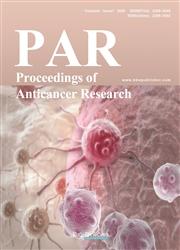Effects of Different Doses of BDNF on Postoperative Cognitive Function in Aged Rats Undergoing Abdominal Surgery
引用次数: 0
Abstract
Objective: To investigate the effects of different doses of BDNF on postoperative cognitive function in aged rats undergoing abdominal surgery. Methods: 72 aged healthy male SD rats of SPF grade were selected. According to the random number table method, the rats were randomly divided into the control group, model group, low dose BDNF injection group, and high dose BDNF injection group, with 18 rats in each group. The model group, low dose group, and high dose group underwent abdominal surgery after anesthesia, and 5?L/time of BDNF was intranasally administered to the rats in the low dose and high dose groups 6 hours after abdominal surgery, of which the dose of the low dose group was 0.1 g/L, while that of the high dose group was 0.2 g/L. The drug was administered alternately through both nostrils, with an interval of 2 minutes each time, for 5 times. The control group did not undergo surgery after anesthesia. The escape latency and swimming distance of the four groups of rats were compared before surgery, the first day, the third day, and the seventh day after surgery; similarly, the BDNF protein expression level in the hippocampus of the four groups of rats was compared on the first day, the third day, and the seventh day after surgery. Results: The escape latency and swimming distance of the control group were not statistically significant on the first day, the third day, and the seventh day after surgery, p > 0.05; the escape latency and swimming distance of the model group, low dose group, and high dose group on the first day, the third day, and the seventh day after surgery were statistically significant, p < 0.05. Before surgery, the escape latency and swimming distance of the four groups were not statistically significant, p > 0.05; on the first day, the third day, and the seventh day after surgery, the escape latency and swimming distance of the model group > low dose group > high dose group > control group, p < 0.05. The BDNF protein expression level in the hippocampus of the control group on the first day, the third day, and the seventh day after surgery showed no statistical significance p > 0.05; the expression level of BDNF protein in the hippocampus of the model group, low dose group, and high dose group on the first day, the third day, and the seventh day after surgery was statistically significant, p < 0.05. On the first day, the third day, and the seventh day after surgery, the expression level of BDNF protein in the hippocampus of the model group < low dose group < high dose group < control group, p < 0.05. Conclusion: Compared with 0.1 g/L of BDNF, 0.2 g/L of BDNF can improve the postoperative cognitive function of aged rats undergoing abdominal surgery.不同剂量BDNF对老年腹部手术大鼠术后认知功能的影响
目的:探讨不同剂量BDNF对老年腹部手术大鼠术后认知功能的影响。方法:选取SPF级健康雄性SD大鼠72只。按随机数字表法将大鼠随机分为对照组、模型组、低剂量BDNF注射组、高剂量BDNF注射组,每组18只。模型组、低剂量组、高剂量组大鼠麻醉后行腹部手术,5?腹腔手术后6 h,低、高剂量组大鼠经鼻给予BDNF L/time,低剂量组为0.1 g/L,高剂量组为0.2 g/L。双鼻孔交替给药,每次间隔2分钟,共5次。对照组麻醉后不进行手术。比较四组大鼠术前、术后第1天、第3天、第7天的逃跑潜伏期和游泳距离;同样,在术后第1天、第3天、第7天比较四组大鼠海马BDNF蛋白表达水平。结果:对照组患者术后第1天、第3天、第7天的逃跑潜伏期和游泳距离比较,差异均无统计学意义,p < 0.05;模型组、低剂量组、高剂量组小鼠术后第1天、第3天、第7天的逃逸潜伏期和游泳距离均有统计学意义,p < 0.05。术前,四组患者逃避潜伏期、游泳距离比较,差异均无统计学意义,p < 0.05;术后第1天、第3天、第7天,模型组>低剂量组>高剂量组>对照组小鼠逃避潜伏期和游泳距离,p < 0.05。对照组患者术后第1天、第3天、第7天海马组织BDNF蛋白表达水平差异均无统计学意义p > 0.05;模型组、低剂量组、高剂量组大鼠术后第1天、第3天、第7天海马组织BDNF蛋白表达水平差异均有统计学意义,p < 0.05。术后第1天、第3天、第7天,模型组海马组织BDNF蛋白表达水平<低剂量组<高剂量组<对照组,p < 0.05。结论:与0.1 g/L BDNF相比,0.2 g/L BDNF可改善老年腹部手术大鼠术后认知功能。
本文章由计算机程序翻译,如有差异,请以英文原文为准。
求助全文
约1分钟内获得全文
求助全文

 求助内容:
求助内容: 应助结果提醒方式:
应助结果提醒方式:


